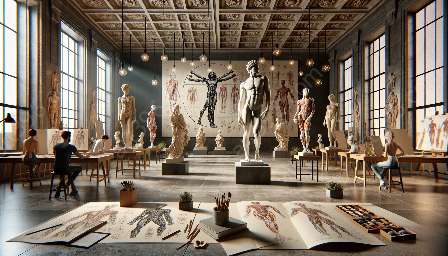The human body has long been a subject of fascination for both artists and scientists. From the intricate workings of internal organs to the complex network of muscles and bones, the human form offers a wealth of material for exploration and study. This has given rise to two distinct fields: artistic anatomy and medical anatomy. While both are concerned with understanding the human body, they approach this understanding in different ways.
Artistic Anatomy: The Body as Inspiration
Artistic anatomy is the study of the structure and form of the human body as it relates to art. Artists have been fascinated by the human form for centuries, seeking to capture its beauty and complexity in their work. Understanding the underlying anatomy is crucial for creating realistic and expressive depictions of the body.
Artists study the proportions of the body, the way muscles and bones interact, and the subtle differences in form that make each individual unique. This knowledge allows them to create lifelike representations of the human form, whether in painting, sculpture, or other artistic mediums.
Artistic Interpretations of the Human Body
Artistic interpretations of the human body go beyond mere representation. Artists use their understanding of anatomy to convey emotions, tell stories, and explore the human experience. By mastering the intricacies of the body's structure, artists can communicate powerful messages through their art, evoking empathy and understanding in their audience.
Medical Anatomy: Understanding the Body's Inner Workings
While artistic anatomy focuses on the external appearance of the body, medical anatomy delves into the inner workings of the human form. Medical anatomy is a branch of science that seeks to understand the structure and function of the body's organs, tissues, and systems. Through careful dissection and study, medical anatomists uncover the intricacies of the human body's inner landscape.
Medical anatomy serves a crucial role in healthcare, providing the foundation for medical practice. By understanding the body's anatomy, medical professionals can diagnose and treat a wide range of conditions, from injuries to diseases. This knowledge is essential for performing surgical procedures and developing effective treatments for patients.
The Intersection of Artistic and Medical Anatomy
Despite their different focuses, artistic anatomy and medical anatomy are deeply intertwined. Artists often draw inspiration from medical anatomy, using their knowledge of the body's inner workings to inform their artistic creations. Likewise, medical anatomists may appreciate the beauty and elegance of the body's form, finding inspiration in its complexity.
Both fields share a common goal: to understand and appreciate the remarkable intricacies of the human body. By exploring the relationship between artistic anatomy and medical anatomy, we gain a richer understanding of the human form, seeing it as both a scientific marvel and a source of endless inspiration for artistic expression.

